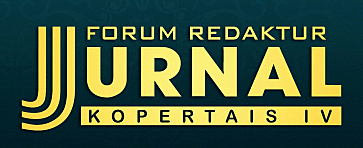Potensi Situs Masjid Makam Mantingan dan Makam Auliya Daeng Sebagai Sumber Belajar Sejarah Kebudayaan Islam Indonesia
Abstract
The research aims to determine the history of Islamic heritage in Jepara, namely the Mantingan Mosque and Tomb site and the Auliya Daeng Tomb. Qualitative methods are used with historical approaches including heuristics, source verification, data interpretation and report writing. The Mantingan Mosque is a cross-cultural blend in Jepara society. The shape of the mosque which is tall and has steps in common with the punden terraces, a relic of the pre-literate era, namely the Megalithic era. On the roof of the mosque you can see the shape of a joglo like a traditional Javanese house, but at the end of the roof there is a pointed shape like a Chinese ethnic house. On the walls of the mosque there are also white stone carvings as the influence of Hindu-Buddhist and Chinese culture. This description explains that the Mantingan Mosque is a concrete example of a harmonious blend of cultures by the people of Jepara during the early days of the spread of Islam in Indonesia. Auliya Daeng Tomb is a historical site located not far from the Mantingan Mosque and Tomb. Auliya Daeng's grave site is located in Krapyak Village, Tahunan District, Jepara. The tomb has something in common with the presence of ancient brick construction in the tomb. Other forms of gravestones have Bugis, Aceh and Demak influences. This legacy indicates that Islam in Java developed long before Demak was founded. In addition, the discovery of Auliya Daeng's grave is a form of tolerance for the Indonesian people, who have always been diverse and multicultural.References
Ahmad M. Sewang, (2017). Islamisasi Kerajaan Gowa Abad Ke-XVI sampai Abad Ke-XVII, Jakarta: Yayasan Obor Indonesia.
Ajat Sudrajat, (2015) Sejarah Pemikiran Dunia Islam dan Barat, Malang: Intrans Publishing.
Anthony Reid, (2017). Asia Tenggara dalam Kurun Niaga 1450-1680 Jilid 2, Jakarta: Yayasan Obor Indonesia.
Ayuningtyas Putri Pratiwia, Kerin Khairunisa Kenang, Ulli Aulia Ruki, (2017). Analisa Perkembangan Motif Ukiran di Jepara Pada Abad Ke-16 hingga Abad Ke-17. dalam Jurnal Aksen, Vol.2, No.2, 2017.
Bernard H. M. Vlekke, (2017). Nusantara: Sejarah Indonesia, Jakarta: KPG.
Dillon J, Rickinson, Teamey, Morris, Choi, Sanders dan Benefleld. (2006). The Value of Outdoor Learning: Evidence from Research in the UK and Elsewhere. School Science Review
Gustiar, R., Kurniawati, K., & Winarsih, M. (2021). The Challenges of Teaching Indonesian History in The Teaching Factory Learning Model in Vocational High School. dalam Jurnal Al-Ishlah, Vol. 13, No. 2.
Hadi P., Iskak W., dan Didin A. Ensiklopedi Toponimi Kabupaten Jepara. Semarang: Dinas Pendidikan dan Kebudayaan Provinsi Jawa Tengah.
Hasyim, A. W. (2021). Demak Sultanate: The Fortress of Islamic Greatness in the Middle Ages Java Island. dalam Buletin Al-Turas, Vol. 27, No. 1.
Koentjaraningrat, (2013). Pengantar Ilmu Antropologi, Jakarta: Rhineka Cipta.
Kuntowijoyo. (2013). Pengantar Ilmu Sejarah. Yogyakarta: Tiara Wacana.
Lexy J. Moleong, (2013). Metodologi Penelitian Kualitatif, Bandung: Remaja Rosdakarya.
Marwati Djoened Poesponegoro dan Nugroho Notosusanto, (2011). Sejarah Nasional Indonesia Jilid 3, Jakarta: Balai Pustaka.
Oktavianus Marti Nangoy dan Yunida Sofiana, (2013). Sejarah Mebel Ukir Jepara. dalam Jurnal Humaniora, Vol. 4. No.1.
Sopacua, J., Fadli, M. R., & Rochmat, S. (2020). The History Learning Module Integrated Character Values. dalam Journal of Education and Learning (EduLearn) Vol. 14, No. 3, 2020.
Sugar, W. (2021). Reconsidering Dale’s Cone: Towards The Development Of A 21st Century “Cone of Experience†to Address Social Justice Issues. dalam Journal of Applied Instructional Design, Vol. 10. No. 4.
Suharto, (2012). Makna Religius Islam dalam Seni Ukir Macan Kurung. dalam Jurnal Ibda, Vol. 10, No. 2.
Supriyono, A. (2013). Tinjauan Historis Jepara sebagai Kerajaan Maritim dan Kota Pelabuhan. dalam Jurnal Paramita, Vol. 23, No. 1.
YM, K. (2021). Penerapan Metode Karyawisata sebagai Upaya Menumbuhkan Interaksi Sosial pada Mata Pelajaran Sejarah Kebudayaan Islam Siswa Kelas VIII MTs Swasta Tarbiyah Waladiyah Pulau Banyak. dalam Jurnal Tarbiatuna, Vol. 1, No. 2.
Yumiarty, Y., Komalasari, B., & Kristiawan, M. (2021). The Urgency of Learning the History of Islamic Culture: Digital Literation Based. dalam Academic Journal of Islamic Studies Vol. 6, No. 1.
Copyright (c) 2023 Asyif Awaludin Romadhoni Romadhoni, Raden Roro Anisa Khaura, Aman, Muhammad Ertam Hidayat

This work is licensed under a Creative Commons Attribution-ShareAlike 4.0 International License.
Authors who publish with this journal agree to the following terms:
- Authors retain copyright and grant the journal right of first publication with the work simultaneously licensed under a Creative Commons Attribution-ShareAlike that allows others to share the work with an acknowledgement of the work's authorship and initial publication in this journal.
- Authors are able to enter into separate, additional contractual arrangements for the non-exclusive distribution of the journal's published version of the work (e.g., post it to an institutional repository or publish it in a book), with an acknowledgement of its initial publication in this journal.
- Authors are permitted and encouraged to post their work online (e.g., in institutional repositories or on their website) prior to and during the submission process, as it can lead to productive exchanges, as well as earlier and greater citation of published work (See The Effect of Open Access).






















